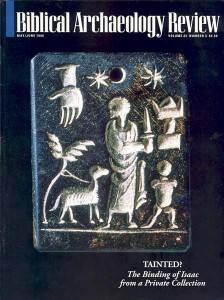To Stop the Looting: The Parable of the Coins
Sidebar to: Magnificent Obsession: The Private World of an Antiquities Collector
Imagine a huge pile of gold coins on the ocean floor. A scientific team is sent down to investigate. The university-trained members of the team carefully recover 100 coins from various places in the mound of coins. They also meticulously measure the pile so that they can determine the number of coins in the pile and explain the ocean currents at the time the coins fell, the way the coins entered the sea, and how the mound was formed.
The coins turn out to be identical. They are rare pentadrachmas, worth $10,000 each on the market. As chance would have it, the total number of coins in the pile is 10,100, one hundred having been removed by the scientific team (and now displayed in a dazzling exhibit in the National Museum), leaving 10,000 coins on the ocean floor. In short, there is a pile of gold coins on the ocean floor worth $100 million.
To remove the remaining coins in a proper manner would require an expedition costing $100,000. The head of the team that removed the first hundred coins is consulted. He explains that for strictly scientific purposes, such an expedition would be wasteful and unproductive. Based on the hundred coins that have been removed, they can be virtually (read almost) certain that the remaining coins are identical to the ones now on display in the museum and that there is really nothing more to be learned by bringing up the remainder. Besides, future generations may be able to learn more from the coins remaining on the ocean floor. Truth to tell, the team director is also involved in a new and very exciting project that may enable him to explain how the edges of coins were rounded and decorated in ancient times. (This is what really excites his interest.)
Already a library member? Log in here.
Institution user? Log in with your IP address.

